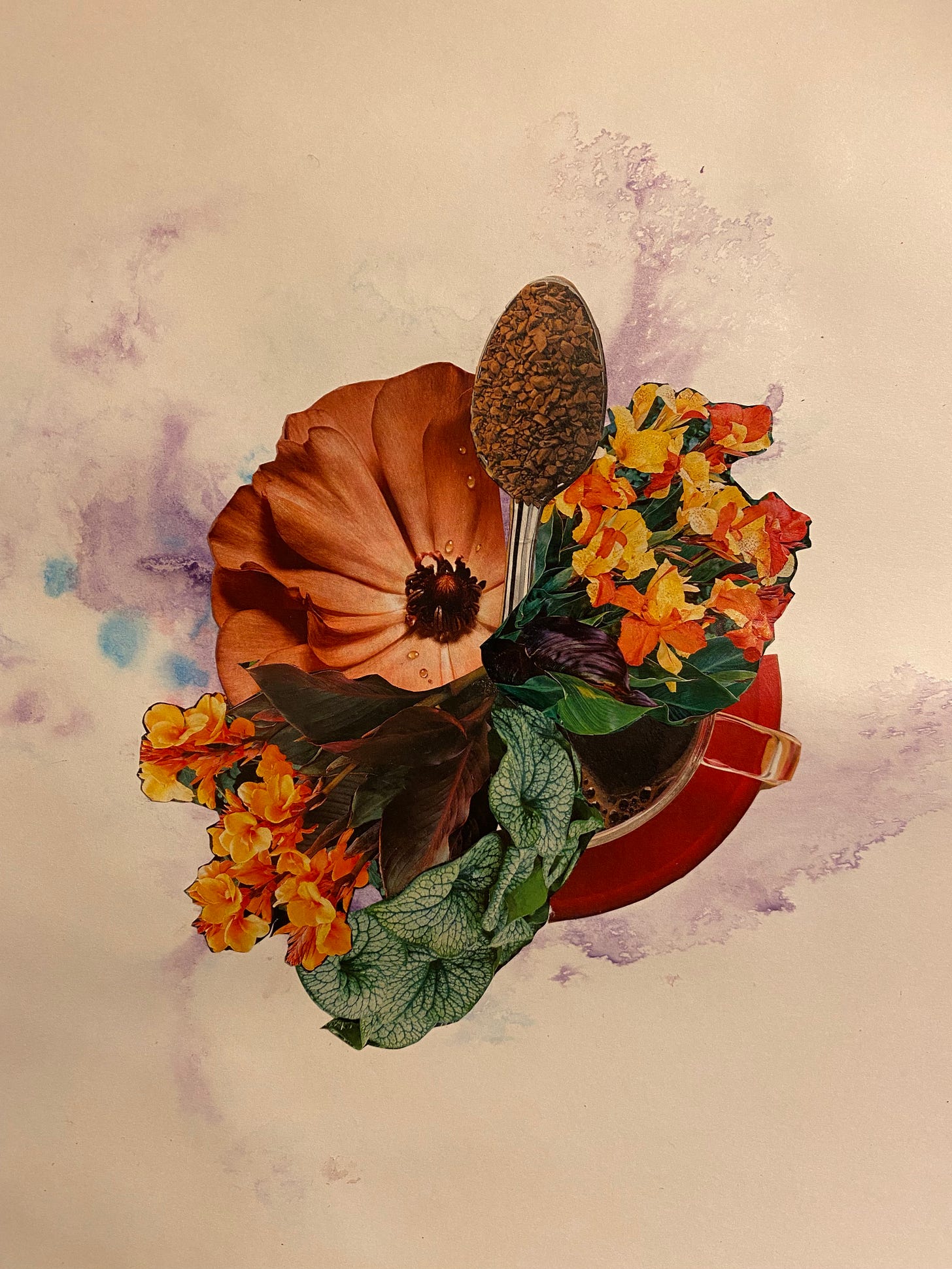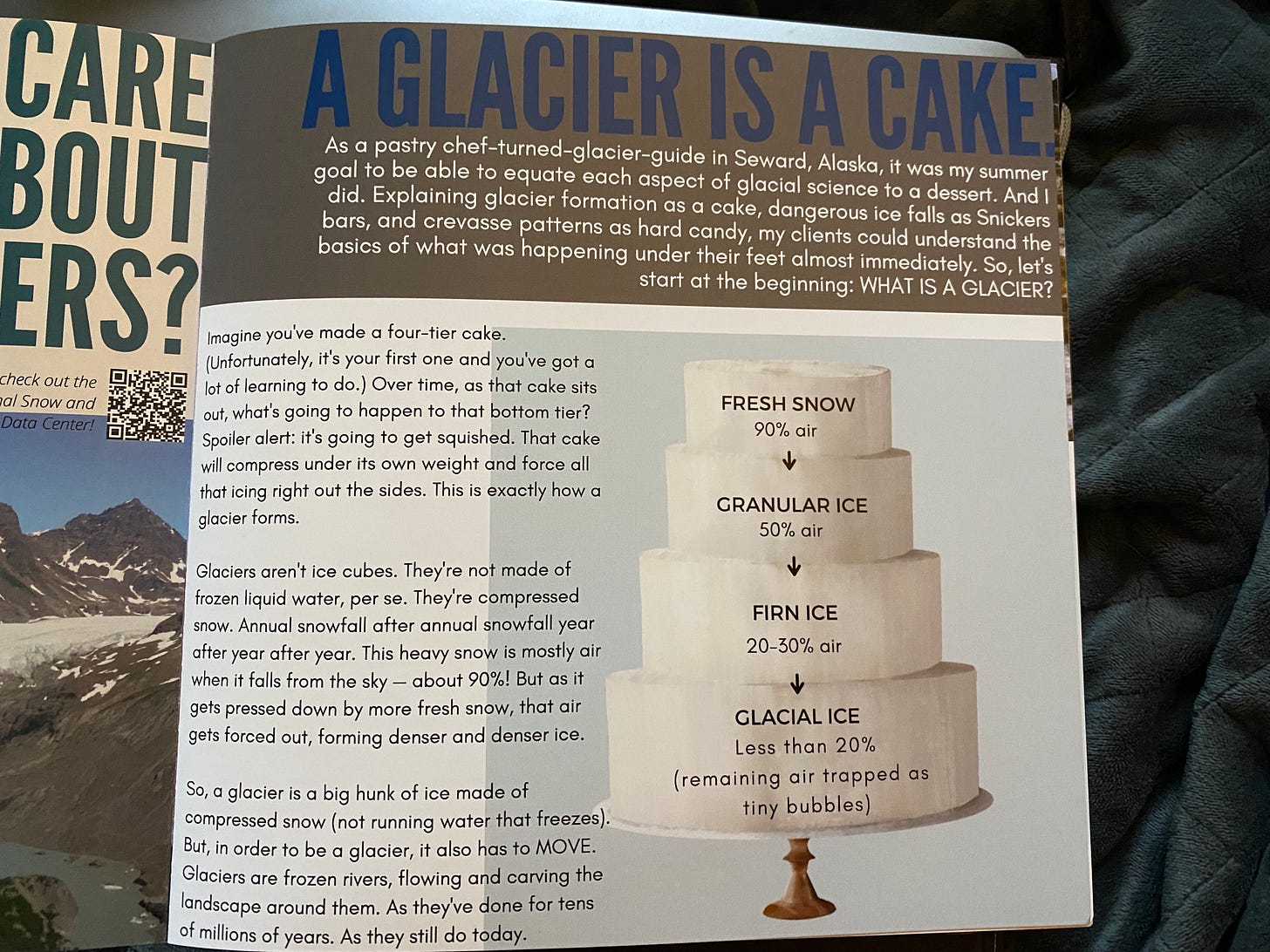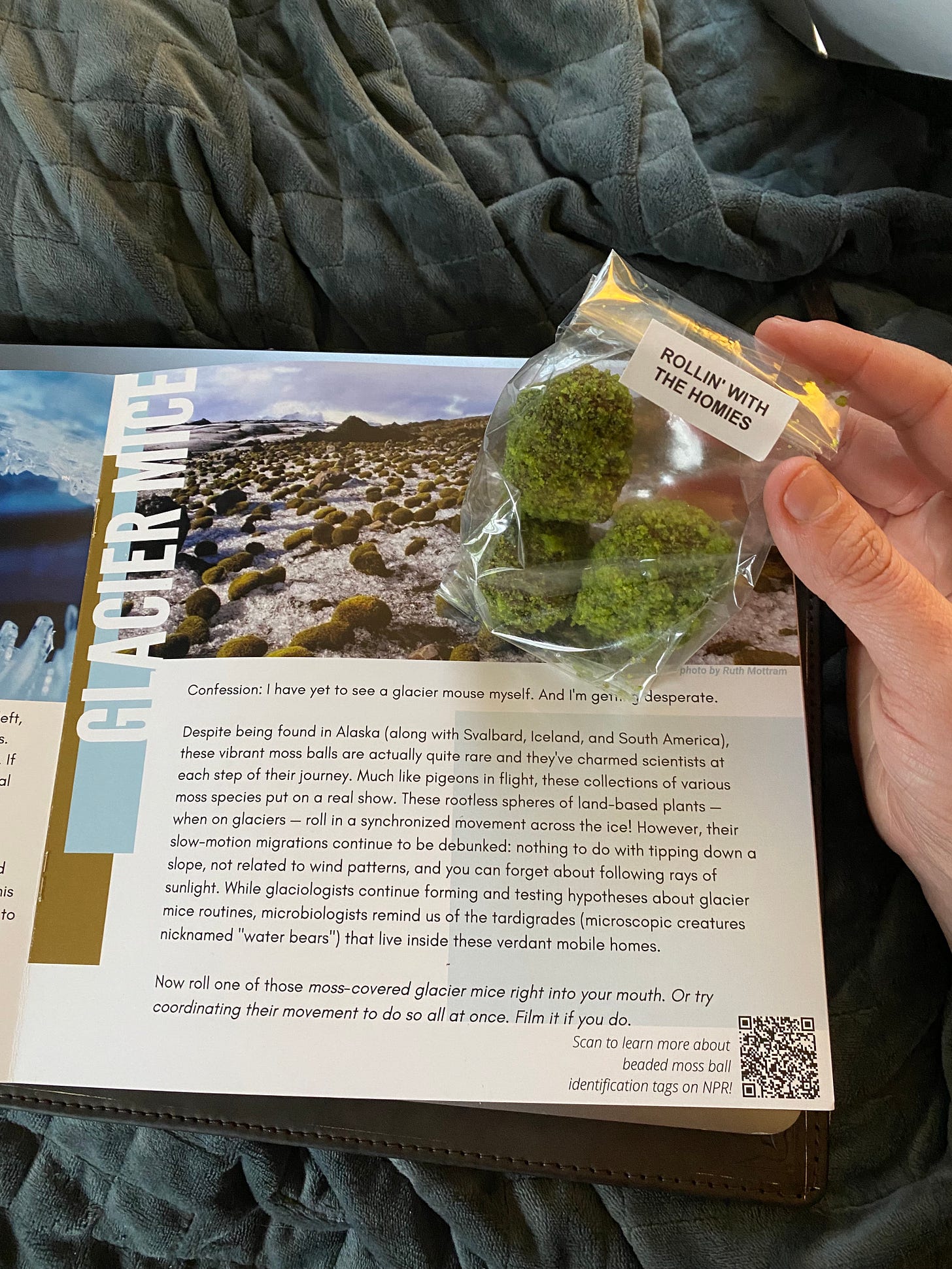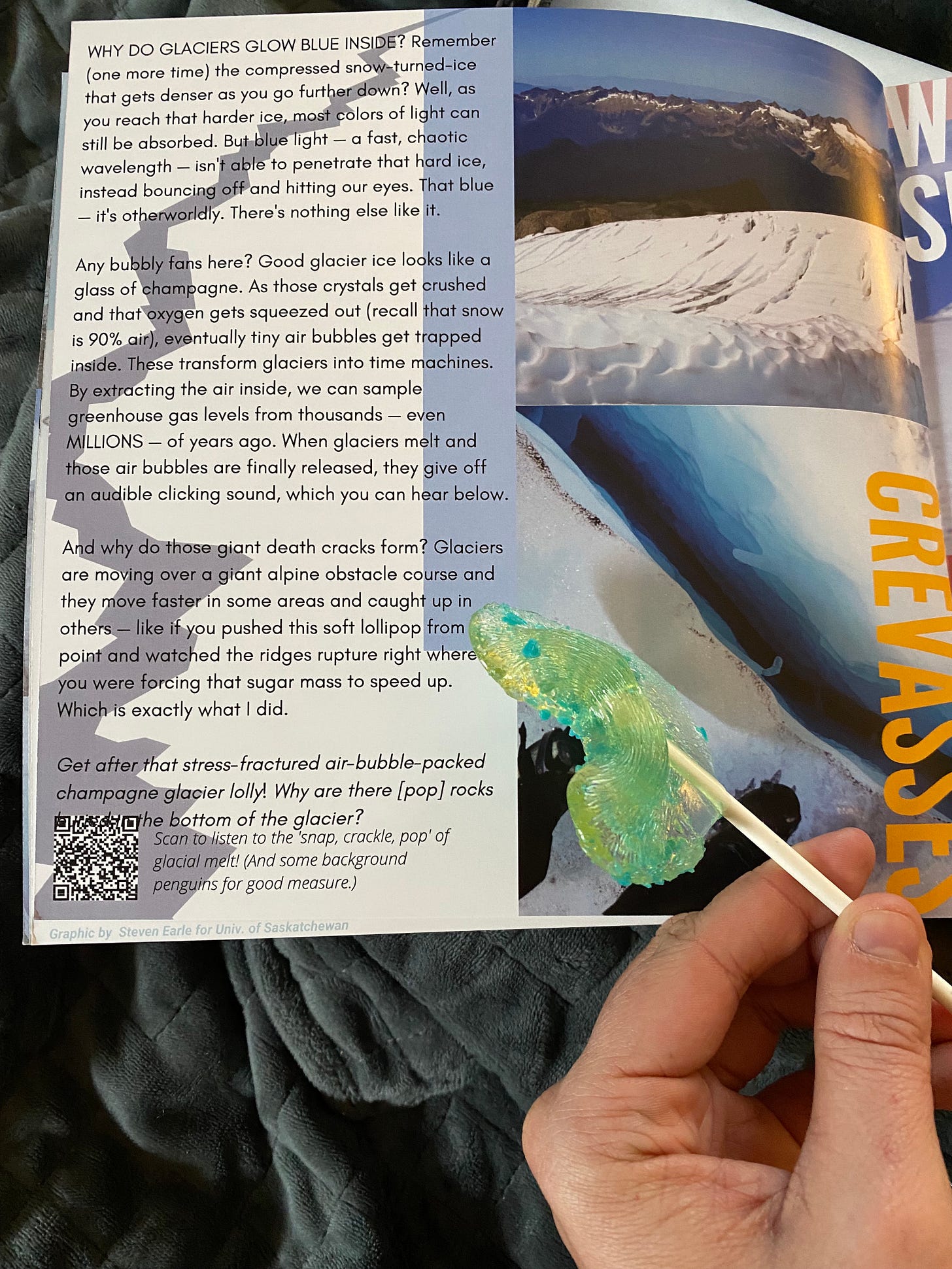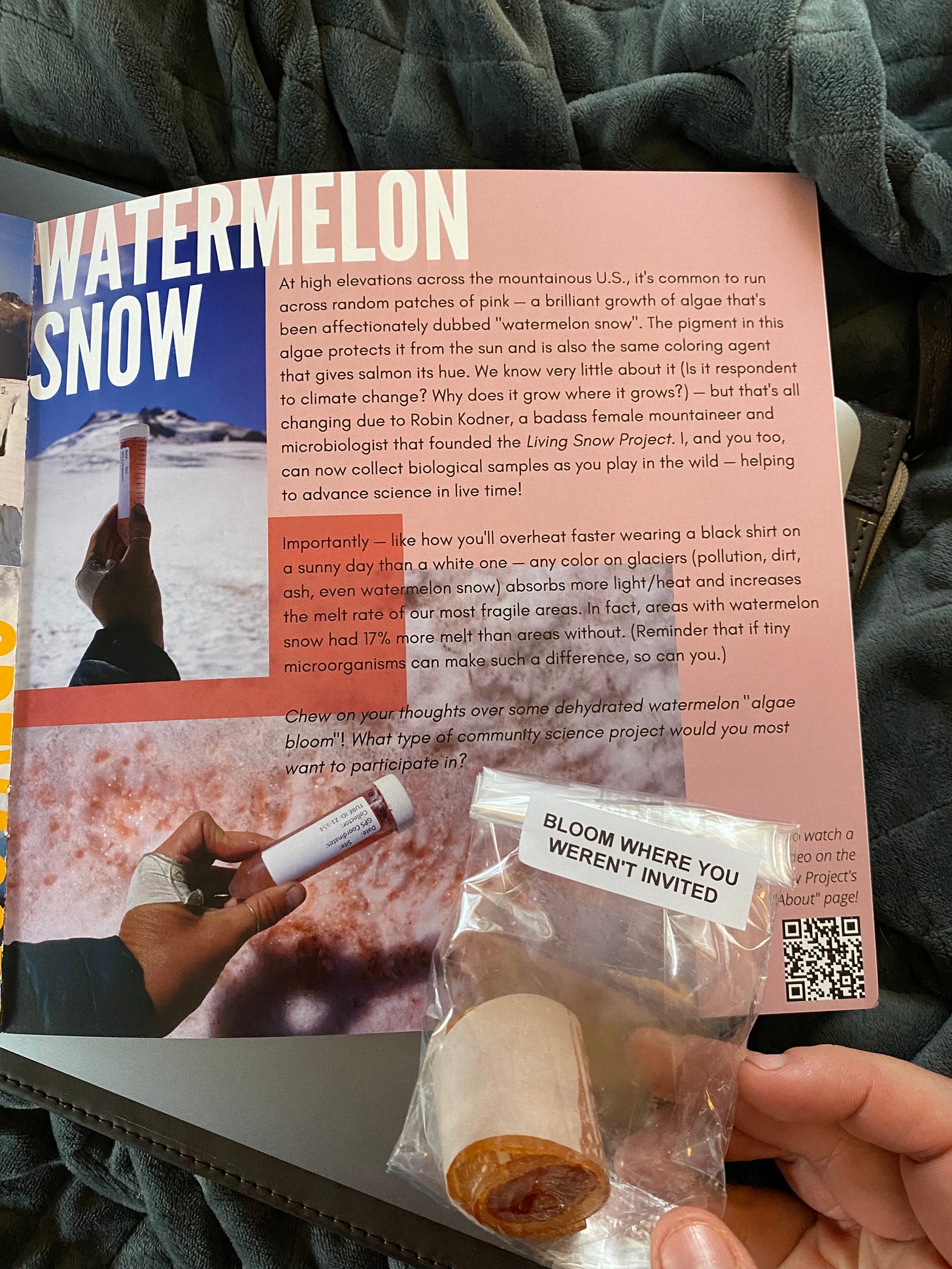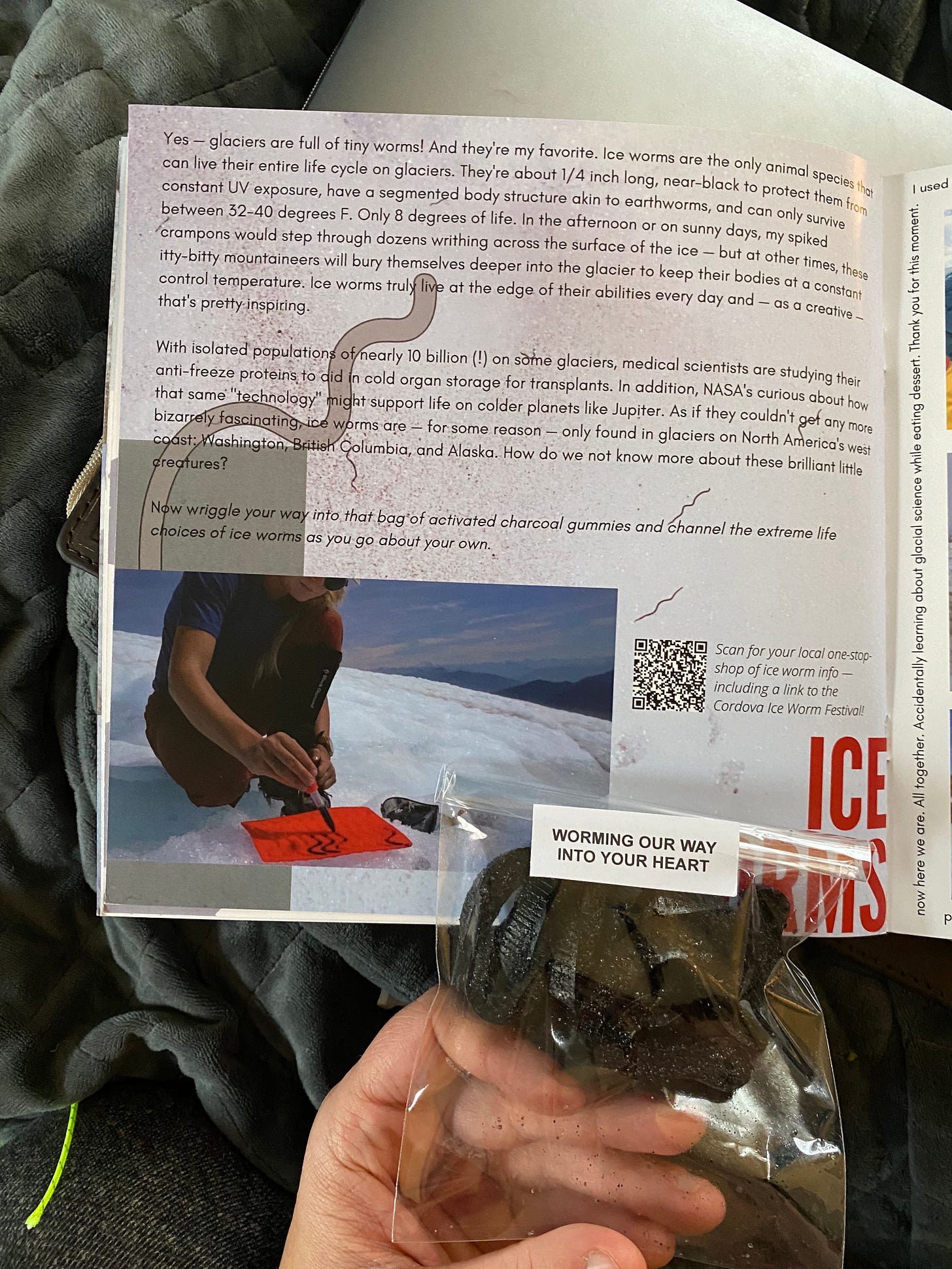I spent a good chunk of December thinking about climate. Climate change, sustainable farming, and the daily choices we make, in our kitchens and beyond, that help or hurt or world. The first draft of this newsletter issue was, admittedly, a bit more doom and gloom, as I grappled with how we might help people become more invested in the health of the natural world.
It's hardly surprising that my mind went here: most of the climate calls to action we encounter are pretty doom and gloom. Every few months, another article sounds alarm bells about how a favorite food source (coffee, cocoa, tuna, etc.) is on the brink of extinction: threatened by our hubris both in over-harvesting and as environmental stewards writ large.
After reading such an article, it's easy for us to wring our hands, contemplate what our mornings would look like without coffee, and feel powerless to do much of anything.
Humans have eaten species to extinction plenty of times (or if we haven’t wiped them out, we’ve driven them perilously close to oblivion), so we know we're capable of continuing to overharvest and destroy habitats. Awareness is important, but many people I talk with are also overwhelmed by climate change and their efforts to help.
How can we foster personal connections with our environment in such a way that we're eager to protect it, as something we care for deeply? Put another way, how can care for our world be rooted in genuine stewardship, or even in love?
Building a personal connection doesn’t have to function from a space of loss or scarcity, and I started to seek out ways we can we strengthen connections to our earth, such that the act of stewardship becomes the reward.
Fostering playfulness and joy around stewardship, rather than doom and gloom, might help people stay connected with environmental preservation in more sustainable ways, and help draw in new audiences who maybe aren’t drawn to our usual environmental preservation narratives.
Around this time, a box appeared on my doorstep, the culmination of baker-turned-glacier enthusiast Rose McAdoo (whose interview in the Unplated series will be in your inboxes soon).
The box contained five desserts, each connected to a different aspect of glacier science, so you got to learn and eat and play. The experience was whimsical but also informative, like the best multi-sensory science museum exhibit but 1000 times more delicious.
There was a popsicle filled with pop rocks to mimic the popping sounds of a melting glacier, candy 'ice crystals' and edible glacier mice.
I not only learned about glacier, I now feel invested in and even passionate about glaciers: By using food as the medium for sharing something she loves, now I love that thing too.
How can this perspective on play help us tackle other issues? For example, helping preserve heirloom crops or support small farms? Or protect endangered species? Creative culinary boxes like Rose's? An immersive visual art or musical experience? Something else?
How, in all these instances, can we move away from what we don't want (e.g. no more coffee) towards what we do (e.g. robust, sustainable growing operations run by people who are paid a fair wage)?
Though comments are typically only for paid subscribers, in this instance I'm opening them up for idea sharing. How would you go about making something playful and fun, that would also spur positive change? How can you use your craft, whether in food or beyond, to inspire passion for the environment in others?
(If you'd like to see pictures of Rose's magical dessert box, I've included a few at the end)
To read
Building on this recent newsletter issue about banquets, and this one on my research, is this piece on author Hannah Woolley.
The Feeding America digital repository is a great resource for cookbook research.
In her newly-released newsletter, chef Jenny Dorsey shares her recipe for seven day fermented beef short ribs.
While doing research for an article, I came upon Stephanie Grant's piece from last year on her experiences as a Black person visiting brewery taprooms, which are overwhelmingly white.
Emily Dickinson's black cake recipe is a reminder that food histories are complex histories, often containing layers that are willfully hidden or simply overlooked.
I've been (re)sharing this article with my writing clients this month, on how priming and reducing distractions can help us be stronger writers.
A writing client also recommended this book, On Revision, for those of you revising manuscripts at the moment.
My grandma's master's thesis was on English language pronunciation in coastal North Carolina, so I enjoyed this piece on a nearby island where Elizabethan English is still spoken.
Hannah Palmer's work on the Flint River has always fascinated me, and so to does this piece, on how the Flint River defined Atlanta.
My last career iteration was in libraries and museums, and this plea, to stop calling things archives, rings true: By assuming any collection is an archive, we render the labor of the archivists invisible as they organize, preserve, and make materials available to us.
If you're a curator, your feelings around "curated" content may be quite similar.
This piece asks if our myths around Orion and the Seven Sisters constellations are the oldest stories in the world, by comparing various Indigenous myths.
Root news
Last month, I was named as one of the Glenfiddich Richest 25, alongside a group of folks in culinary and beyond who I really admire.
The Richest 25 is meant to be a counterpoint to "Richest 100" lists that focus solely on money. Here, "wealth" is defined in terms of experiences, curiosity, community connections, and creativity, and I'm honored to be considered wealthy in that way (which aligns with how I view wealth, too).
Thank you, to all of you, for your support, memberships, subscriptions, kind words, etc. All of which allows me to keep writing words and carry on this crazy, incredible journey! Thank you!
If you're looking for inspiration or to build some new skills in 2022, all Root's online classes, as well as the Hidden Cosmos: A Fermentation Oracle + Recipe Deck, are on sale this month.
You can get them on my website and on Etsy (choose the latter for international shipping).
Use the code newyear at checkout for 15% off.
I've gotten the digital proofs back for my next book, Our Fermented Lives: How Fermented Foods Have Shaped Cultures and Communities and they look great! I can't wait to share it with you later this year. If you would like to preorder, head to this link.
This year, I’m inviting readers to join me in brief vision journaling exercises each month to help us intentionally craft a meaningful and hopefully joyful 2022. You can learn more and see the year’s prompts here.
This month’s journaling prompt is:
What does balance look like for me? How do I balance work and play, and create space to truly relax and unwind?
To make: Adventure ferment
The adventure ferment is one of my favorite recipes in Rooted in Place, because it's a digestible record of the places you've been and the foods you've eaten. As an ode to a 2022 that's (hopefully) filled with good adventures, here's how to make your own:
In 2019, the night before officiating my grandma's funeral, I sat in her home for the final time. As I often do in grief and joy, I turned to the kitchen, pulling an old jar from the cabinet and filling it with veggies and salt and water. The jar joined me the next day, as I visited the restaurant my uncle used to cook at, and later stayed in a cabin en route to home. The brine smelled like that trip, and it brought me so much joy that I decided to keep it going.
My adventure ferment accompanies me each time I travel, and is filled with fruits and veggies, and sometimes wild edibles (think pine needles, etc.) wherever I go. If for some reason I can't bring it along, I bring something back (like an edible leaf) to put in there. As a result, the brine has a whisper of each microbial community I encounter on my journeys and, most excitingly, it’s a constantly evolving project. The flavor of adventure ferment several years ago was different than now, which is different than it will be in several more years. I find it to have an incredibly complex and deliciously sour flavor, but of course your results may vary.
To start your adventure ferment:
Use the basic lactofermentation recipe to make a brine for your veggies. (I find that using firm, crisp veggies (like fresh green beans or carrots) works best here, particularly as your ferment ages, because it keeps you from getting a slimy or squishy mess).
Pack up your newly-brined friend and prepare for an adventure! Go to a local park, go camping, take a road trip, or even just bring your ferment with you outside as you garden (adventure doesn’t have to be far away to be exciting!) Whenever feasible, try to leave the lid off to increase your ferment’s exposure to the microbes in the air.
Gently stir or shake your ferment regularly, so that the brine’s surface is disrupted and you prevent the growth of molds and other unwelcome critters, like kahm yeast.
Keep your adventure ferment (and all your ferments!) out of direct sunlight and at a comfortable room temperature. If you’re freezing or boiling, your microscopic friends probably are too.
Make sure to follow the best practices from elsewhere in this class regarding fermentation in general (for example, keeping your veggies under the brine at all times).
Maintaining your adventure ferment
Of course, we want to taste the goodies we ferment during our adventures, so you’ll likely be swapping out your veggies somewhat regularly. This is a good practice as it gives the whole diverse slurry of lactobacilli you’ve developed something new to eat.
You also will want to occasionally replace some (but not all!) of the brine, as the salt content will change over time as your veggies absorb some of the salt. To do this, pour out (and reserve!) 1/3 to a scant ½ of the brine. Mix up a fresh brine with room temperature water and salt, and pour into your adventure ferment jar to cover. I tend to do this right before going on a camping trip or road trip, in addition to replacing the veggies, so that the new microbes from my journey will have a happy home to come to when they meet their more established friends.





